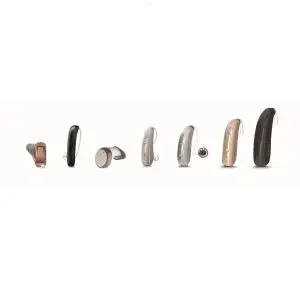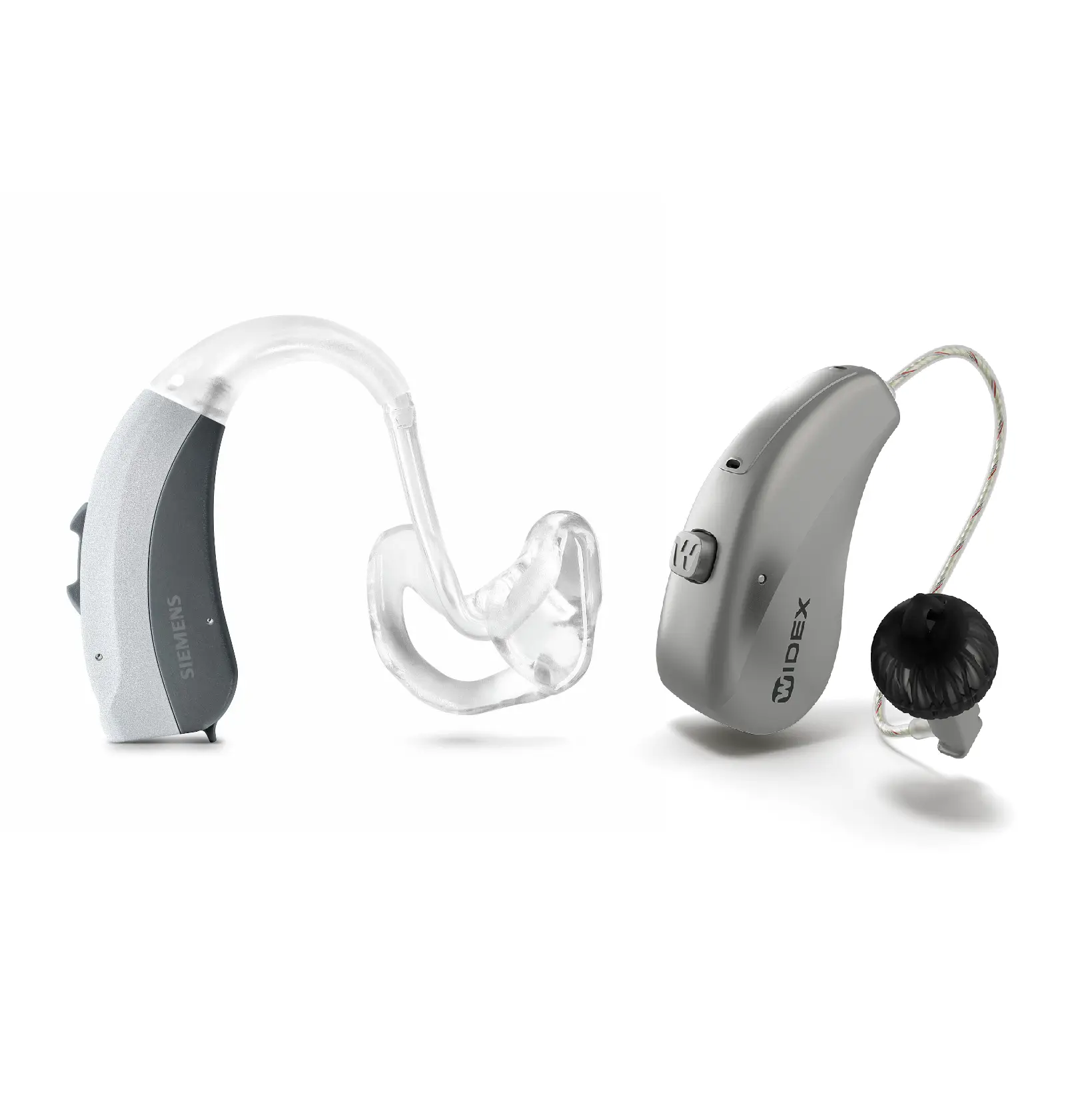

If you’ve ever stepped into the world of hearing aids, you’ve likely come across two popular styles: Receiver-in-the-Canal (RIC) and Behind-the-Ear (BTE). At first glance, they might seem pretty similar, both sit behind your ear, and both can come with sleek, nearly invisible tubing or custom molds. However, under the surface (or, more accurately, inside your ear), these two styles are doing very different jobs. So let’s break down the differences between RIC vs BTE hearing aids in a way that’s both easy to understand and maybe even a little fun.
The main difference between RIC and BTE hearing aids comes down to where the receiver (that’s the part that actually delivers the sound) is located.
In a BTE hearing aid, the sound has to travel from the receiver through a piece of tubing and then into your ear. While this works well, especially with a good fit, that longer acoustic path can slightly alter the sound quality, particularly for high frequencies.
RIC devices eliminate this problem by placing the receiver directly in your ear. With less distance for sound to travel and fewer barriers, RICs often produce a more natural sound experience, especially in the high tones.
No matter which style you choose, there’s a world of fitting options to make your hearing aid comfortable as well as effective:
Pro tip: The more powerful your hearing aid (or the more hearing loss you have), therefore the more important it is to use a standard or custom earmold to keep that sound sealed in and effective so you don’t lose sound or get feedback.
Choosing between a RIC and a BTE depends on your hearing needs, your lifestyle, and also your preferences. Here’s a quick cheat sheet:
|
Feature |
RIC |
BTE |
|
Receiver Location |
In the ear canal |
Behind the ear |
|
Sound Path |
Through wire |
Through tubing |
|
Sound Clarity |
Often more natural |
May slightly alter sound |
|
Custom Mold Option |
✅ Yes |
✅ Yes |
|
Power for Severe Loss |
Moderate |
High (great for profound loss) |
|
Discreetness |
Very discreet |
Slightly bulkier |
|
Durability |
Good |
Very durable |
Both RIC and BTE hearing aids are amazing devices that can be tailored to your unique hearing journey. With options for custom earmolds, slim tubes, and domes, today’s devices are more adaptable than ever. Whether you’re after crystal-clear sound or a super-powerful amplifier, there’s a style (and a fit) that’s perfect for you.
Need help choosing or customizing your hearing aids? We’re all ears, literally!
ReSound Savi RIE hearing aids offer cutting-edge AI-powered technology to enhance speech clarity and reduce background noise. Designed for all-day comfort, these rechargeable hearing aids provide seamless connectivity and superior sound processing. Key features include:
Signia Pure Charge&Go BCT IX hearing aids provide seamless Bluetooth Classic connectivity, superior sound processing, and all-day battery life. Designed for comfort and performance, these small, rechargeable RIC hearing aids offer hands-free calls, music streaming, and advanced speech clarity. Key features include:
Starkey Edge AI RIC is a cutting-edge receiver-in-canal (RIC) hearing aid designed for individuals with mild to severe hearing loss. Available in multiple technology levels:
Powered By SinglerDesign.com